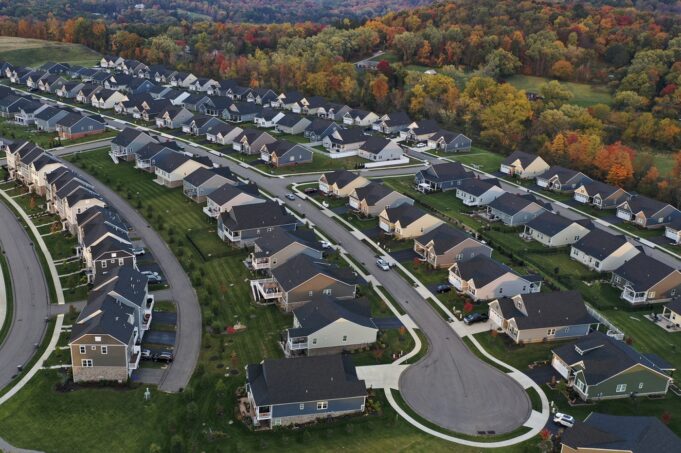Written by Jeff Lazerson
Nearly a year into a special lending program aimed at underserved homebuyers, the initiative is soon to expand from a few banks to mainstream, non-banking lenders.
Could these good intentions be the beginning of our next lending debacle?”
Launched in February this year, the Special Purpose Credit Program is the government’s way of getting mortgage lenders to expand access to credit. More specifically, it gives mortgage lenders the freedom to come up with zero-down loan programs that support first-time buyers in underserved communities.
There are no minimum government underwriting standards.
“SPCPs are endorsed by HUD (U.S. Department of Housing and Urban Development), the CFPB (Consumer Financial Protection Bureau) and the OCC (Office of the Comptroller of the Currency). But they don’t provide guidelines,” said Jung Choi, a senior research associate at the Urban Institute’s Housing Finance Policy Center. “Lenders are on their own.”
We’ve seen this movie before. It was called the “Great Recession and Mortgage Meltdown.”
Lenders 15 years ago were under pressure from government officials and community stakeholders to lower the mortgage qualifying bar to make access to homeownership easier for Black, Brown and low-income borrowers.
This pressure to broaden homeownership was admirable. Americans gain much of their community esteem and family wealth by owning property. A home provides stability and family shelter, a savings account of sorts for owners who benefit by paying down the mortgage (rather than paying rent) along with historical property appreciation.
Let’s revisit for a moment the loose lending practices in 2006, which were a recipe for disaster.
A class of unscrupulous mortgage lenders funded a cornucopia of predatory mortgages to unsuspecting homebuyers and refinance borrowers, getting them funded with little or nothing down. Oftentimes these deals came with easy underwriting requirements, too. Coupled with asleep-at-the-switch mortgage regulators and ivory tower policy writers, it was a predictable disaster that destroyed the American dream for many underserved homebuyers and their communities.
Before we throw the baby out with the bathwater, let’s ponder whether no downpayment loans and looser underwriting are inherently bad.
Several experts I interviewed cited a lack of down payment funds as a significant barrier to homeownership. So, zero down, zero closing cost SPCPs can work, they said, especially when reasonable underwriting standards are added to the credit decision rigor.
Bank of America was one of the bigger banks to launch its own SCPC, the Community Affordable Loan Solution. The no-down payment program debuted Aug. 30 in specific Black and/or Hispanic-Latino metros across the U.S. including certain Los Angeles area census tracts.
Here are some of the program highlights:
\- Applicants must be first-time buyers from any race or ethnicity. They don’t have to be Black or Hispanic-Latino.
\- Applicants get in with zero down payment. BofA pays the closing costs. And it provides a $15,000 equity “gift” for Los Angeles buyers. For example, an applicant pays $500,000 for a home with zero down. The starting mortgage balance is $485,000, thanks to the BofA gift.
\- Prospective buyers must complete a homebuyer certification course before writing an offer.
\- Buyers must be income qualified. BofA considers the total house payment plus monthly bills (even adding utilities which Fannie and Freddie do not) divided by the borrower’s monthly income. The bank also looks at the applicant’s history of paying bills on time for things like utility bills. Applicants can leverage those on-time payment histories for non-traditional credit references to overcome low or no credit scores.
A BofA spokesperson declined to say how many people have applied in the Los Angeles market or what percentage of applicants were approved.
And while the bank declined to provide the interest rate offered on its Community Affordable Loan Solution, a source who asked not to be identified because the person is not authorized to speak on behalf of BofA told me the rate is fixed at 7.125% for 30 years.
That’s zero down with lender-paid mortgage insurance built into the rate. BofA also pays the customary buyer closing costs. Here’s an example of how a loan would work under the BofA program:
On a home sales of $500,000, the loan amount is $485,000 with a 7.125% interest rate. The principal and interest payment including BofA’s paid mortgage insurance built into the rate is $3,267.53 monthly. Now, add in the monthly property taxes at 1.25% for $520.83, and monthly homeowners insurance at roughly $121.25 and the total payment is $3,909.61. (This is assuming no HOA fees).
It’s unclear if or when BofA will be expanding the program Orange, Riverside and San Bernardino counties.
So, what about best practices for mortgage lenders to ensure both borrowers and lenders don’t fall into default — especially when it involves these zero-down mortgages?
“As BofA has done, it is a best practice to require first-time homebuyer counseling,” said Jeff Jaffee, senior advisor at Housing Finance Strategies. “It is important to make sure borrowers understand all the benefits and risks of homeownership.”
Prudent underwriting is likely another good reason.
“Bank of America is holding these loans on its books,” said Guy Cecala, CEO, and publisher of Inside Mortgage Finance. “The last thing they want is to have bad loans (non-performing loans) on their books,”
What happens if such programs become a free-for-all? Choi told me Fannie and Freddie are gearing up to roll out their own SPCPs. Mortgage lenders are going to be making those loans and selling them to F & F.
Let’s not forget the game of hot potato leading up to the mortgage crisis. Mortgages got funded that should never have been funded. Those loans were sold to investors or pooled as mortgage-backed securities. Somebody else was left holding the bag when the borrowers couldn’t pay.
Something else to consider: “Mortgage rates are high. Home prices are high. It’s not really a great time to buy a home,” said Choi.
Mortgage police: Are you listening?
Freddie Mac rate news
The 30-year fixed rate averaged 6.61%, 47 basis points lower than last week. The 15-year fixed rate averaged 5.98%, 40 basis points lower than last week.
The Mortgage Bankers Association reported a 2.7% mortgage application increase from the previous week.
Bottom line: Assuming a borrower gets the average 30-year fixed rate on a conforming $647,200 loan, last year’s payment was $1,374 less than this week’s payment of $4,138.
What I see: Locally, well-qualified borrowers can get the following fixed-rate mortgages with one point: A 30-year FHA at 5.625%, a 15-year conventional at 5.5%, a 30-year conventional at 6%, a 15-year conventional high balance ($647,201 to $970,800) a 15-year high balance conventional at 5.99, a 30-year high balance conventional at 6.375% and a jumbo 30-year purchase, fixed at 6.25%.
Note: The 30-year FHA conforming loan is limited to loans of $562,350 in the Inland Empire and $647,200 in LA and Orange counties.
Eye catcher loan program of the week: A 30-year jumbo purchase mortgage locked at 6.25% for the first seven years interest-only without points.
Jeff Lazerson is a mortgage broker. He can be reached at 949-334-2424 or jlazerson@mortgagegrader.com.
Shared from OC Register











